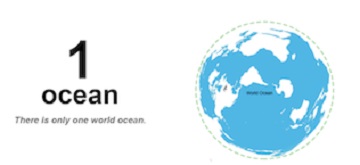370815-one-ocean.jpg

All of the Earth's oceans exchange water, so technically there is only one global ocean. Credit: National Oceanic and Atmospheric Administration
Many adventurers yearn to “sail the seven seas” -- to ply all the world’s oceans. Well, we have a little bad news for those folks. There aren’t seven oceans. In fact, there’s only one -- the global ocean.
Modern-day maps typically show five oceans: the Pacific, Atlantic, Indian, and Arctic, plus the recently designated Southern Ocean. All but the Southern Ocean are at least partially bounded by the continents or by strings of islands, which makes them look like separate bodies of water -- but they’re not.
Despite appearances, the oceans aren’t completely isolated. Instead, they’re all interconnected. They physically touch each other in many places. The Atlantic and Pacific hook up off the tip of South America, for example, while the Atlantic and Indian oceans interact off the tip of Africa.
What’s more, the oceans exchange water with each other. Great currents move around the entire planet -- some near the surface, others in the ocean depths. So changes in one ocean basin eventually can affect all the others -- all because our world is covered by a single giant ocean.
If you still want to sail the seven seas, though, you can do it in the modern way. “Seven seas” has been used by many cultures over the centuries to describe all the big bodies of water traversed by their sailors. To maintain that tradition, modern-day geographers have compiled their own list: The Arctic, Indian, and Southern oceans, plus the north and south Atlantic and the north and south Pacific -- seven seas from one global ocean.

